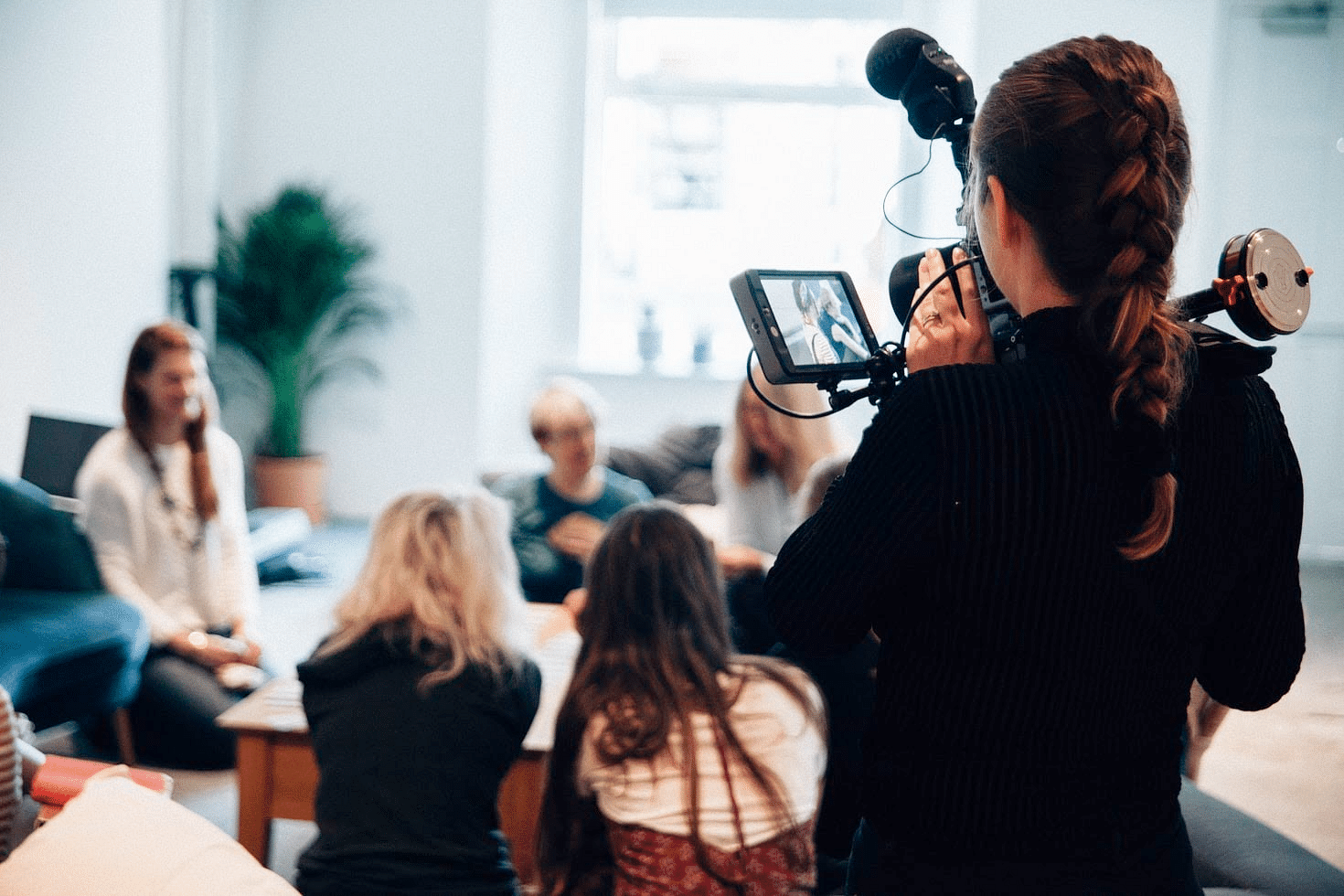
Struggling with your media coverage? Here are three types of content to help you get noticed
By Jim James, Founder EASTWEST PR and Host of The UnNoticed Entrepreneur.
What is the difference between a bylined article, an interview, and a case study? If you’re working with an agency or are going directly to the media, it’s important to know that these aren’t the same thing.
Recently, my PR agency, EastWest PR, had some conversations with potential clients in China. And they were confused about the difference among these three. In the latest episode of The UnNoticed Entrepreneur podcast, I cleared up some of the technicalities of public relations and discussed how these things are not the same and how they create different opportunities.
The Core of Media Relations
The overall objective of media relations is to share your story and your company’s and products’ story. You can also share the story of whichever stakeholders are of interest to you. These could be the existing members of your staff or even potential members of your staff. It could also be your partners or prospective or existing customers.
The journalist’s job is to look for a story that’s going to impact at least half, if not two-thirds, of their audience. If it’s less than that, then the time that they used in putting a particular article or an audio interview into publication won’t give them enough return on investment or ROI. There’s not going to be enough readers, traffic, and advertising dollars to repay that content.
Image from Unsplash
The first thing that you have to bear in mind is that magazines, podcasts, TV shows, and radio shows are all in this for business. In China, the journalists and the media specifically will be asking you for money to run your story — unless it’s a really good story. As far as they’re concerned, they’re doing your work for you. So they will charge you for getting access to their audience. And this seems fair enough.
There are also those journalists who are looking for good stories and want to try different ways of doing that. In the succeeding sections, I’ll be diving into the aforementioned three different types of content that you can work on with a media entity.
Bylined Articles
The bylined article is simply an article written by somebody with the author’s name or spokesperson’s name on it. And it’s really a thought leadership piece.
An agency will pitch a bylined article for a client to explain the latter’s view or their position on something topical (for instance, COP26, the Black Lives Matter movement, the energy crisis that’s impacting manufacturing in China). This content is an avenue for your company or your spokesperson to address an industry issue. It’s not a platform to talk about your own company; it’s for you to give a perspective on an issue that’s affecting the broader industry.
Many media feature daily, weekly, and monthly bylined articles. They invite somebody to come and write that piece for them. Nine of out 10 bylined articles are written by a PR firm. The journalist and the editor will review them to make sure that it’s in line with the editorial standards of their publication. The whole point of it is for them to get quality content from an industry leader. This helps them show that they have connections in the industry and give their readers direct access to those people.
Interviews
Image from Unsplash
The interview is what most people think of when they talk about PR. It’s when a journalist sits down with a spokesperson and shares a conversation with them. The journalist will ask questions and the respondent will provide their replies. The topic may or may not be about a specific industry trend, but it could also be about a new product launch or something technical or legal. Whichever it may be, the point is that there’s a discussion taking place.
Interviews rarely come out quite as how the company or the spokesperson intends it to be. Often, journalists will ask questions that the interviewee wasn’t expecting to get. And, quite often in fact, the spokesperson will not give the right kind of answers when it comes to what a PR agency has prepared them for.
In an interview, keep in mind that the real goal is to build an engagement between you and the journalist. You also have to build some sense of personality and empathy among the audience. It’s as much a personality test as it is, for example, a policy test.
For instance, you may find a Chief Executive Officer (CEO) being interviewed. Their company’s stock price can change depending on what they’ve said, how they’ve said it, and how they’ve conducted themselves in the interview. This is also why live interviews can be so nerve-wracking. Once you get on TV or on the radio, there’s no way back.
The key to a good media interview is preparation. You need to understand your key messages, your body language, and your diction. You also have to practise your proof points.
When my agency coaches someone for a media interview, we have what we call a message home. It’s a triangle atop three columns. In the triangle, we will have the key message of the company. Then in the three columns are other supporting messages. Each of these three supporting messages will have proof points. The goal is to reduce all the conversations and all the topics that a company can talk about into this single sheet, the message home.
This also helps in immensely minimising the stress for the spokesperson. It’s beneficial for the journalist as well, because what they want is to get a structured response to their structured questions so that the audience will have a positive experience.
Case Studies
Case studies are, by and large, where your company can show how you’ve impacted a customer. It’s really about somebody other than your company.
They can also be used as a kind of social proof. It’s where you can illustrate to your readership, viewership, or listenership the solutions that your company has — and how they’re working for other people like them.
Image from Unsplash
Among the three types of content, this is the most sought-after. Everybody knows that audiences love case studies. While a bylined article is a monologue and an interview is a dialogue, a case study is something that will appeal to people who are looking for solutions for problems that they’re trying to solve.
A case study can be an article with 500 to 1,000 words. It can also be in video format. But whichever it is, it should include the problem that needs to be solved, the obstacles that your company was facing in solving these problems, and the solution — how you found it and implemented it. It also covers the challenges that you’ve faced while managing the implementation of the solution as well as the outcome.
Good case studies are appealing, especially if they’re supported by images and quotes from people who have been impacted by the solution (e.g. the installation of new software).
Why Not Only Do Interviews?
When we were talking to the Chinese company that I’ve mentioned earlier, they discussed their work in America. They said that they just want to do interviews every month. They’re neither interested in bylined articles nor in case studies. In fact, they weren’t even aware of these two types of content. The problem with just trying to get interviews is that they won’t give the company enough media coverage.
In China, there are quite a lot of journalists who are getting paid to attend an interview. However, in Europe and America, this is not the case. If you suggest a monetary payment, the journalist will reject your overtures. This shows that there just aren’t enough journalists to interview everybody that wants to be interviewed.
Image from Unsplash
Another issue is that the media won’t run an interview with the same company every month. They will always need to give breathing space between one interview and the next. This could be six to 12 months; it could be longer than that. You have to be realistic about how frequently the media will be able to run your story. They have to be balanced and they can’t appear to have a favourite vendor or supplier. From a commercial point of view, keep in mind that a publisher won’t also want to give one company too much air time — they want everybody else in the industry to have equal exposure.
In reality, what happens is that companies compete with others just to have that air time or that page or that podcast audience. This makes for a more compelling watching, reading, or listening experience. Commercially, this is also where magazines, broadcasters, and publishers come and ask you to advertise on their website, to buy mailings list and subscriptions from them, to attend an event, or to sponsor a speaking opportunity.
How a PR Agency Can help
It’s important to remember that the media are a business. And they have different ways of accepting your information.
A bylined article is great. They love a piece with 800 to 1,000 words with your picture, addressing something topical that’s going to be relevant to about two-thirds of their audience. An interview, on the other hand, is where they engage with you and get a better understanding of who you are as you build that personality. Meanwhile, a case study is a way for them to know what you do to impact people who are their listeners, viewers, or readers.
The PR or consultancy firm that you’re working with should guide you as to which of these three tools you should use, when, and with which media. Take note that some media prefer case studies, some prefer interviews, and some like bylined articles. Some have a difference of opinion, depending on the season. For example, before trade shows, people love to have interviews because everyone’s getting ready to participate in the event. They also want to build personalities around this gathering.
Image from Unsplash
But what’s important is to use a balance in your communications. You can follow our idea of the Active Communications Index (ACI), which is your content times your channels times your consistency. Basically, ACI emphasises that there’s no point in going to the media with one article or for one interview and then nothing for the next three to six months. The key to successful communications in terms of brand- and reputation-building is to do the work consistently month in and month out — the same way with what you do in a social setting or any other relationship.
Wrapping Up
The bylined article, the interview, and the case study are just three different formats in which you can address the media — be it print, radio, TV, or podcasts — and get your content across.
If you’re struggling with how you can convey your message, think about the information that you have and how it can be formatted into a case study. If you’ve a particular topic in mind, it can also be a bylined article showing thought leadership. If there’s an event and you need to explain that to your audience, you can also have an interview.
All of these are possible. And it all comes down to your need to go out and find out from the media in advance what they and their audience are interested in. Seek first to understand what they are interested in and then share what you can bring to their audience. This will be the most successful way of getting yourself some great coverage over time.
If you need help with PR, you can drop me a line at jim@eastwestpr.com and I’d be more than happy to help you with your needs on getting your company noticed.
This article is based on a transcript from my podcast The UnNoticed Entrepreneur, you can listen here.
Cover image Daniele Franchi on Unsplash





